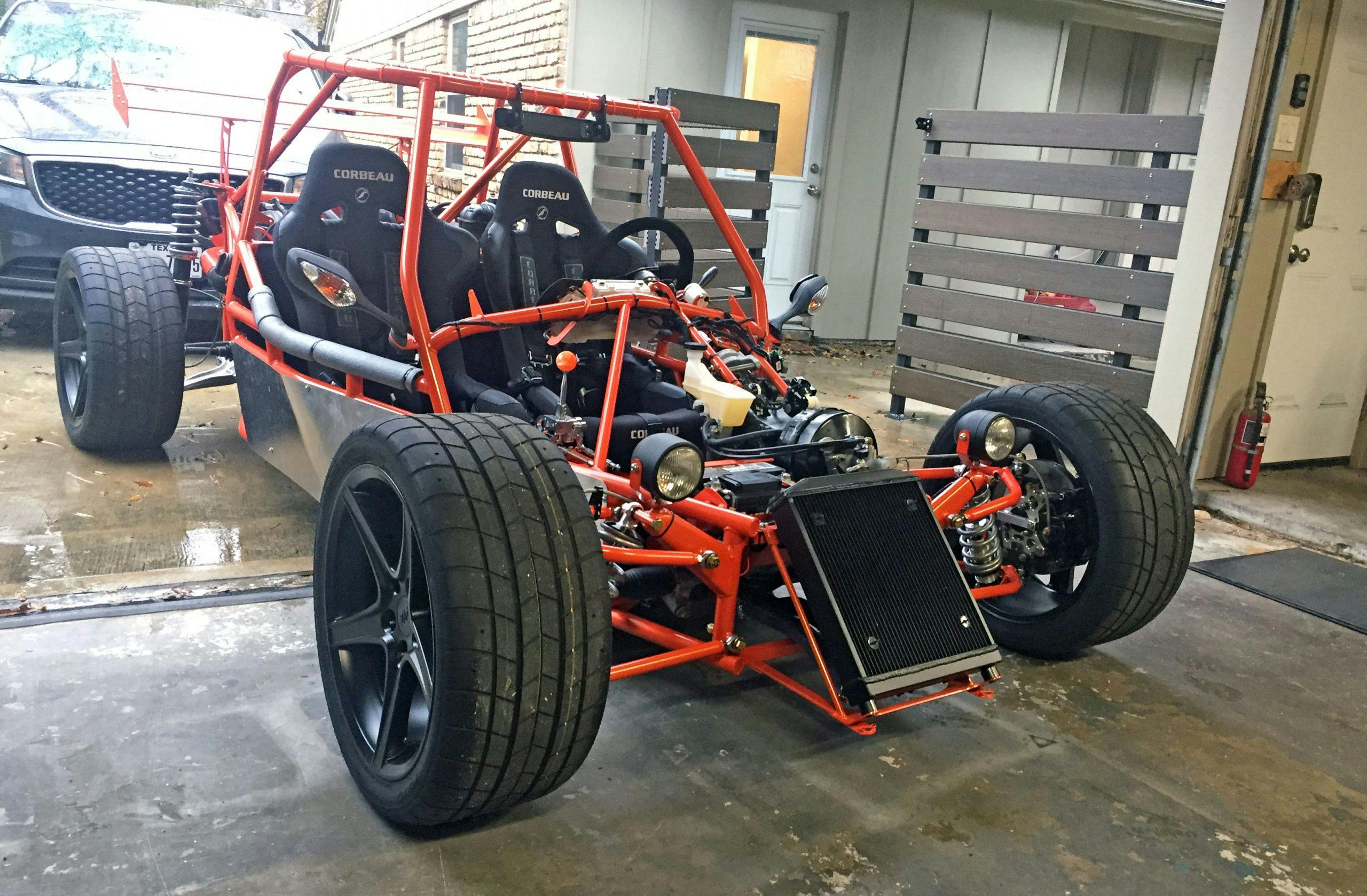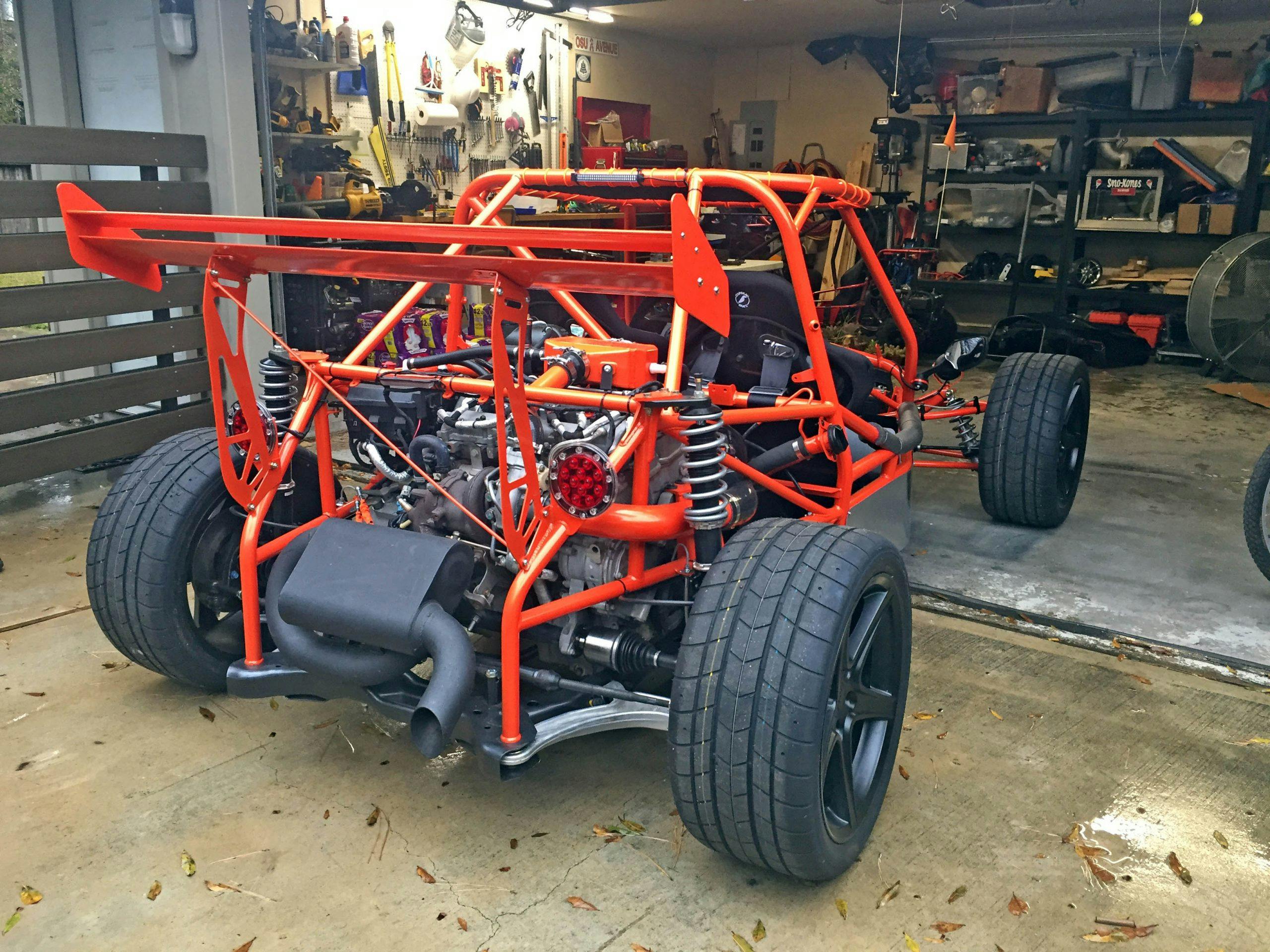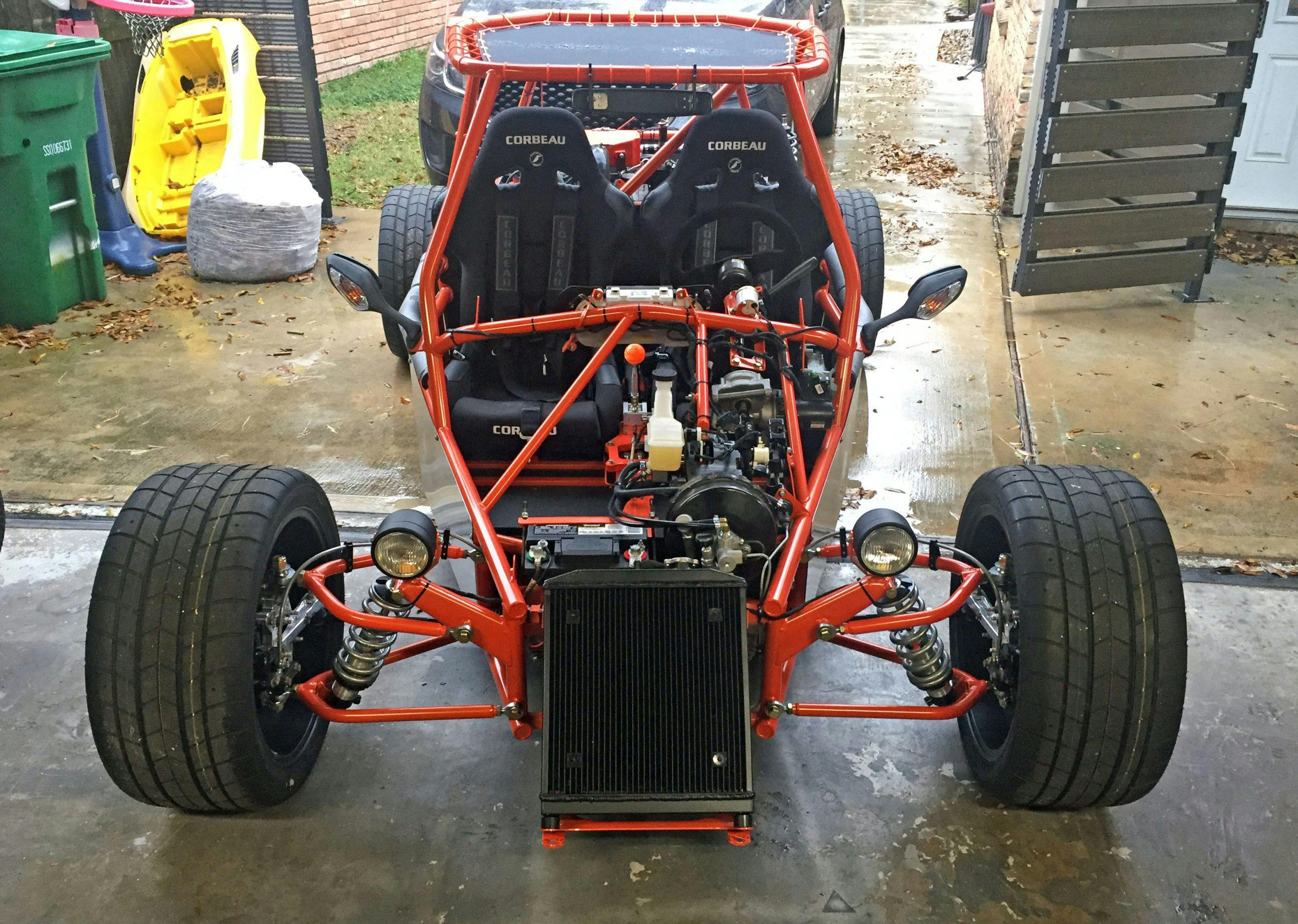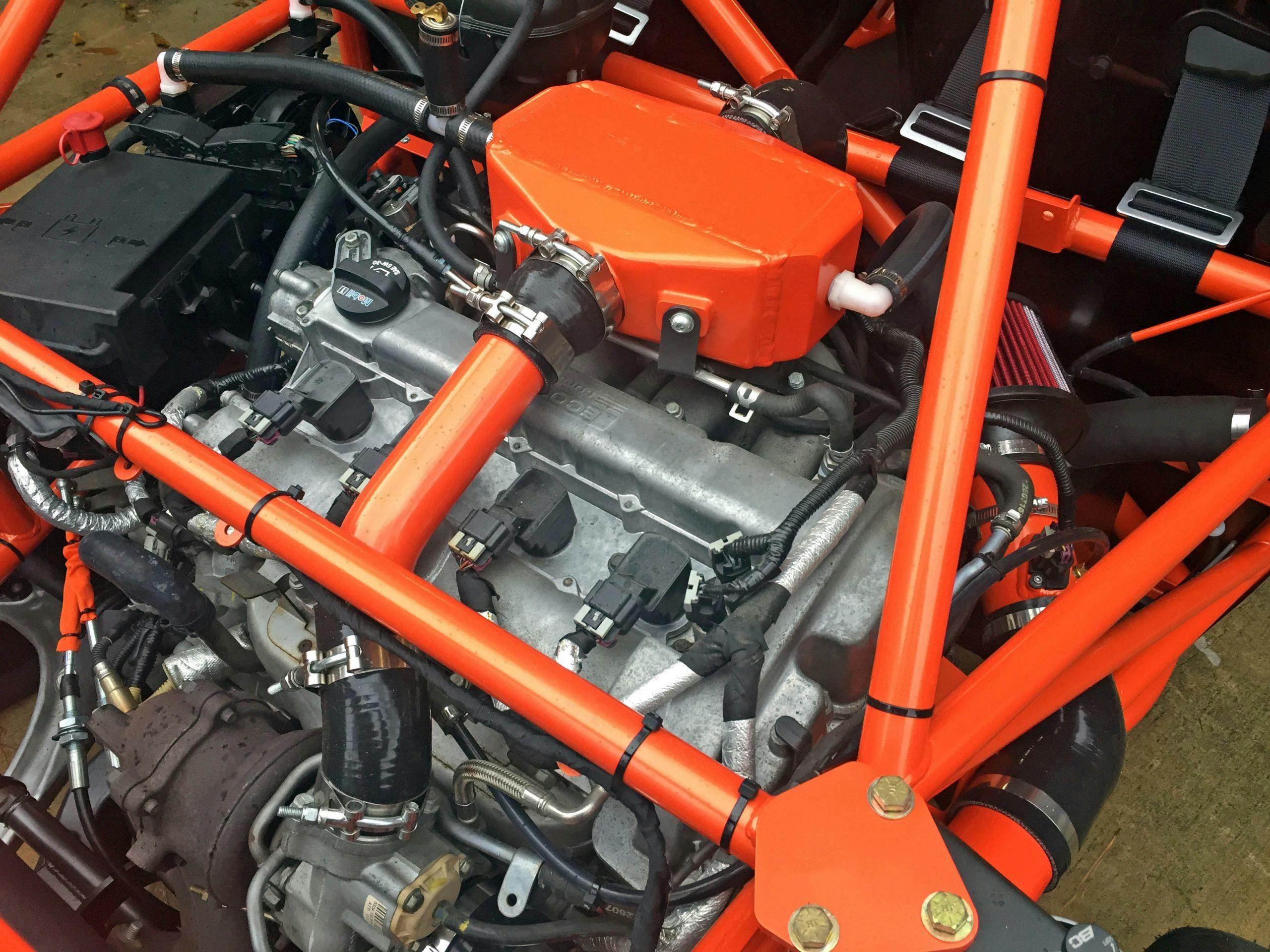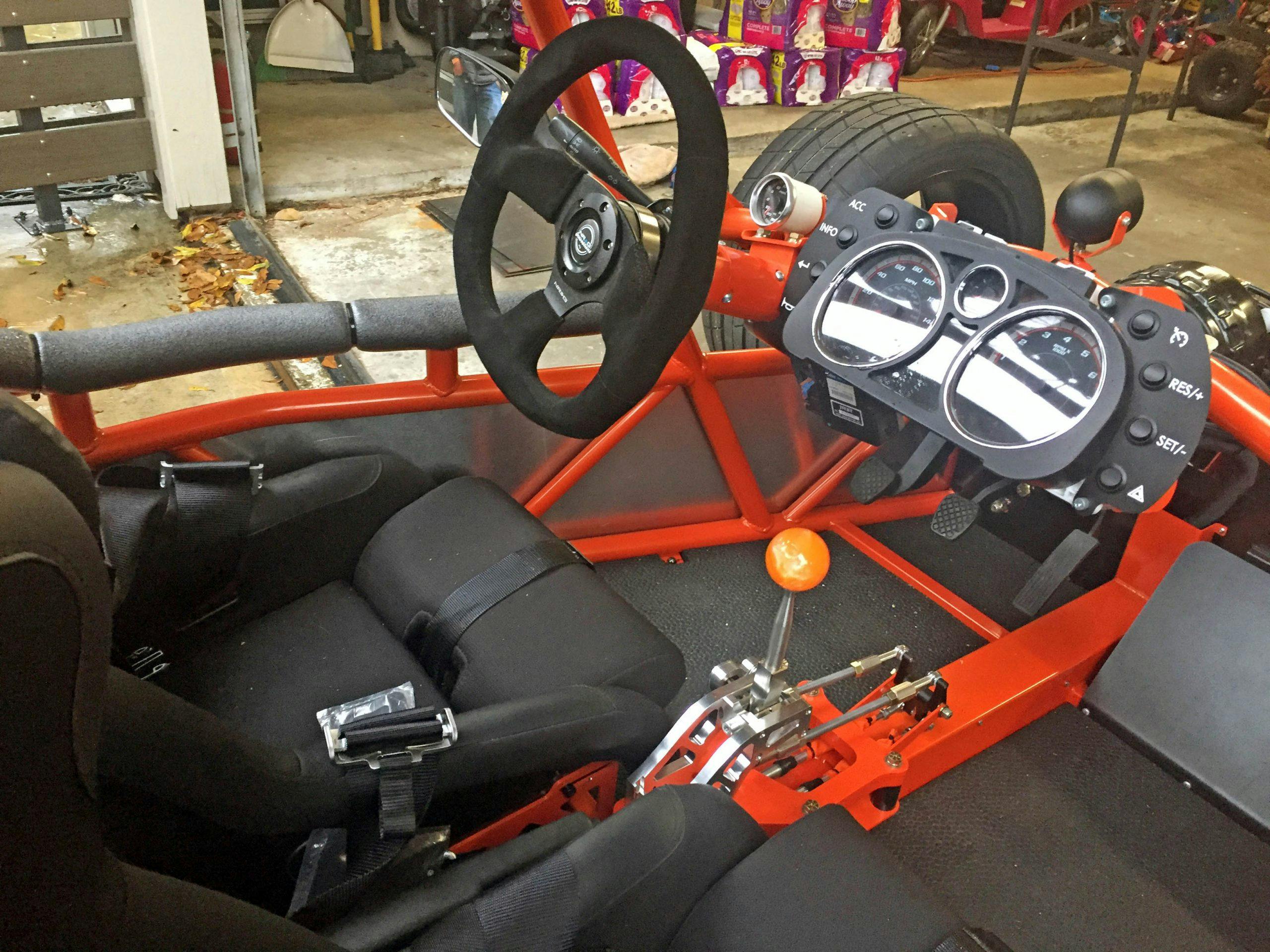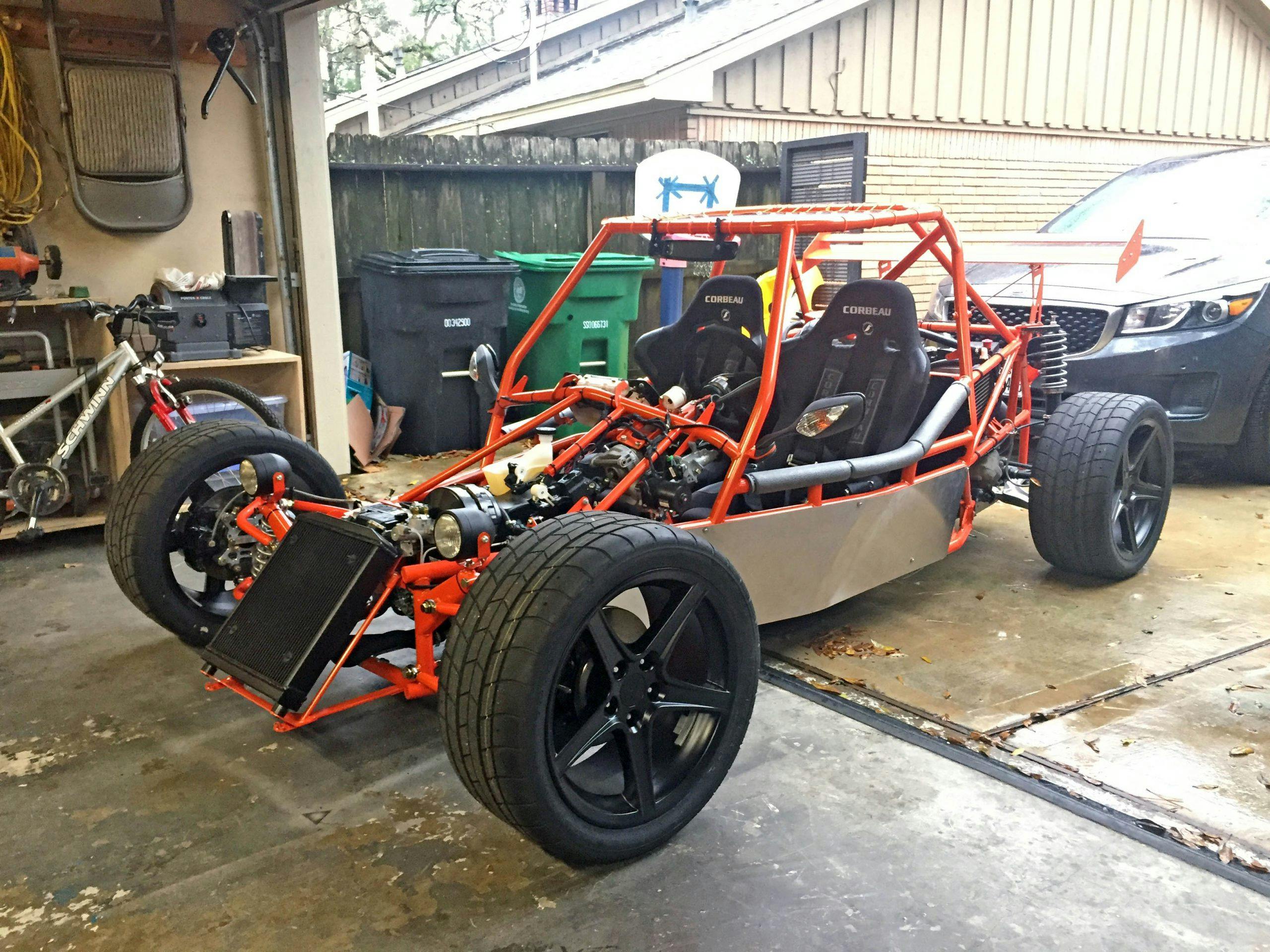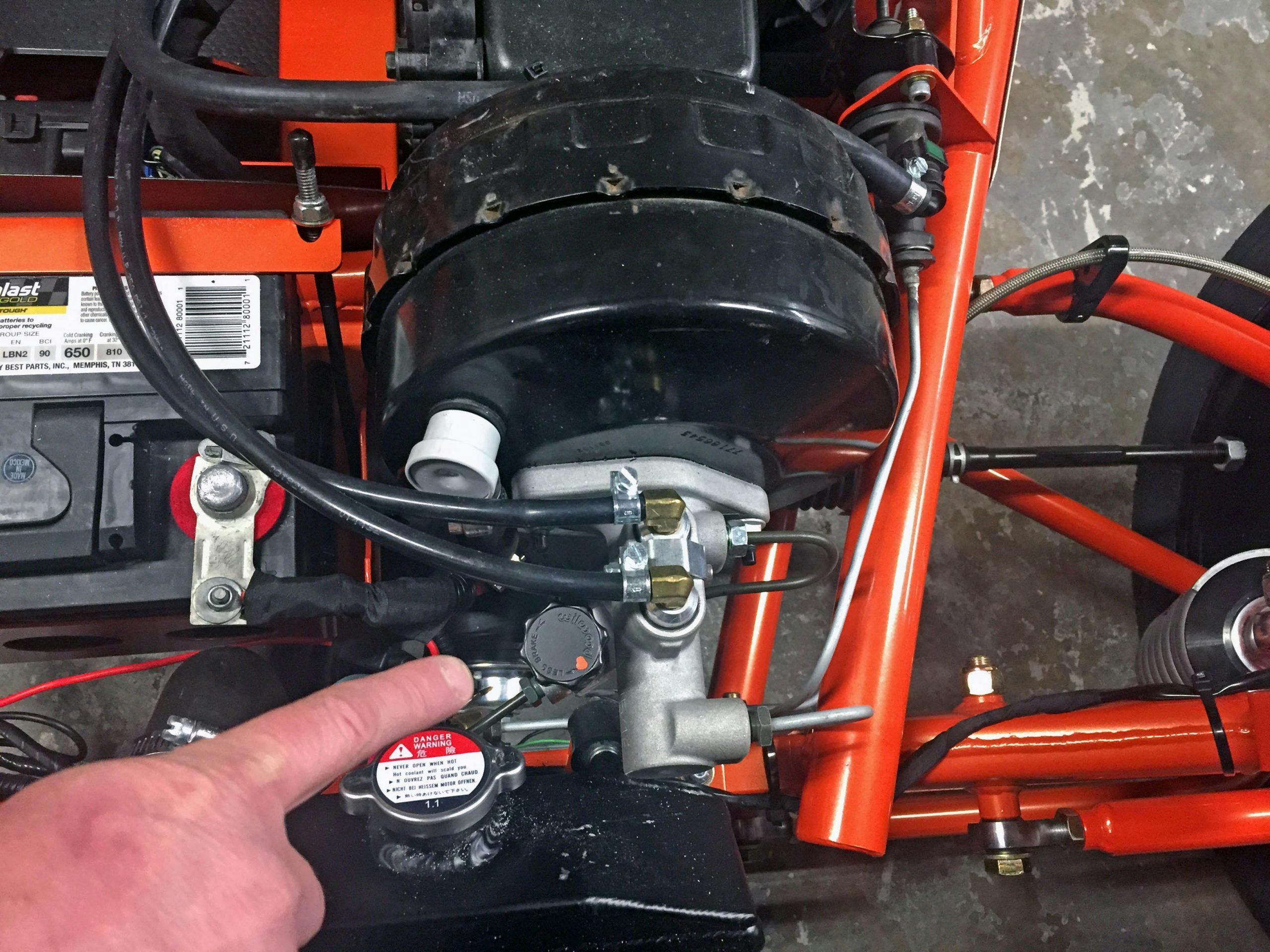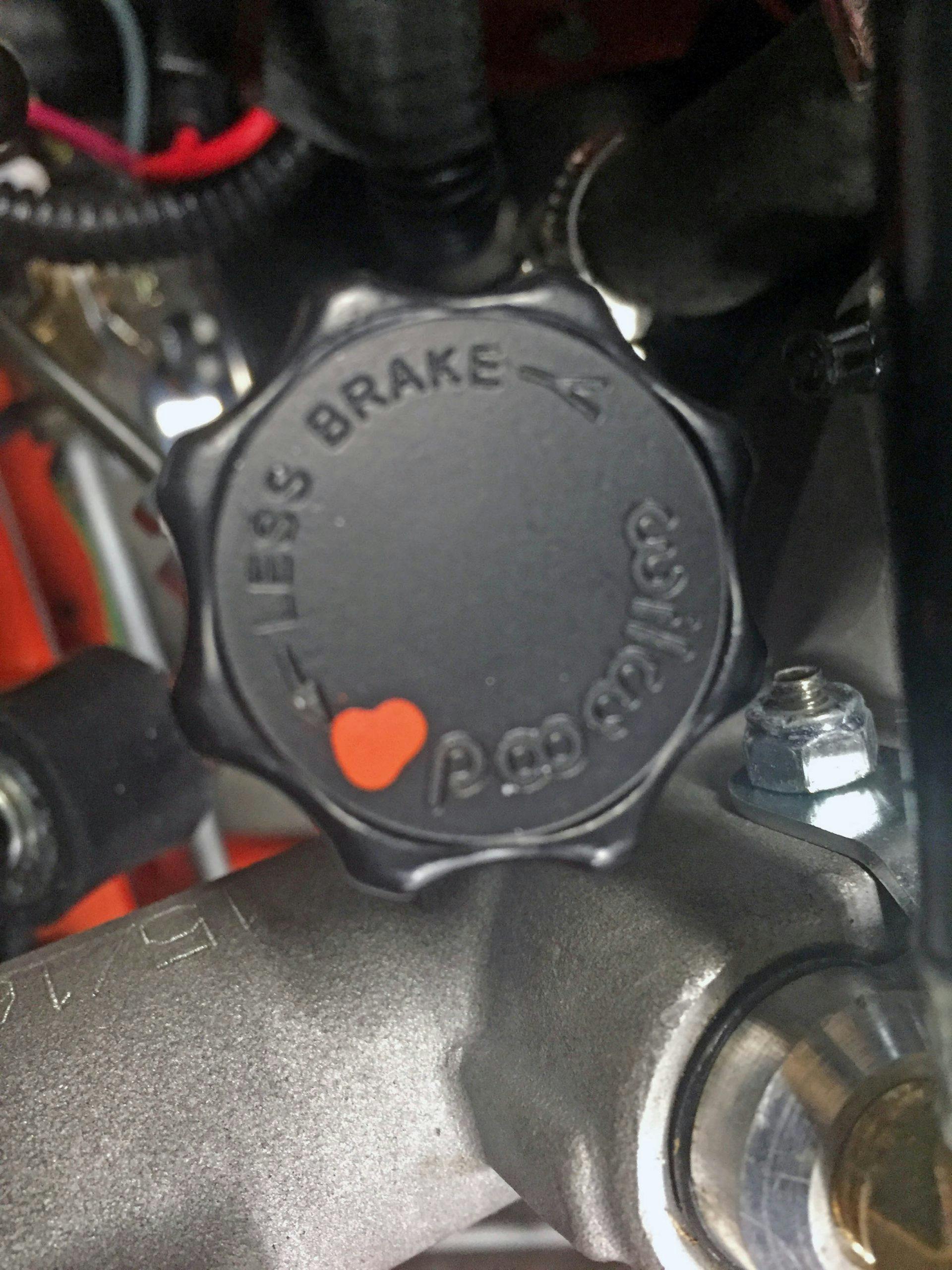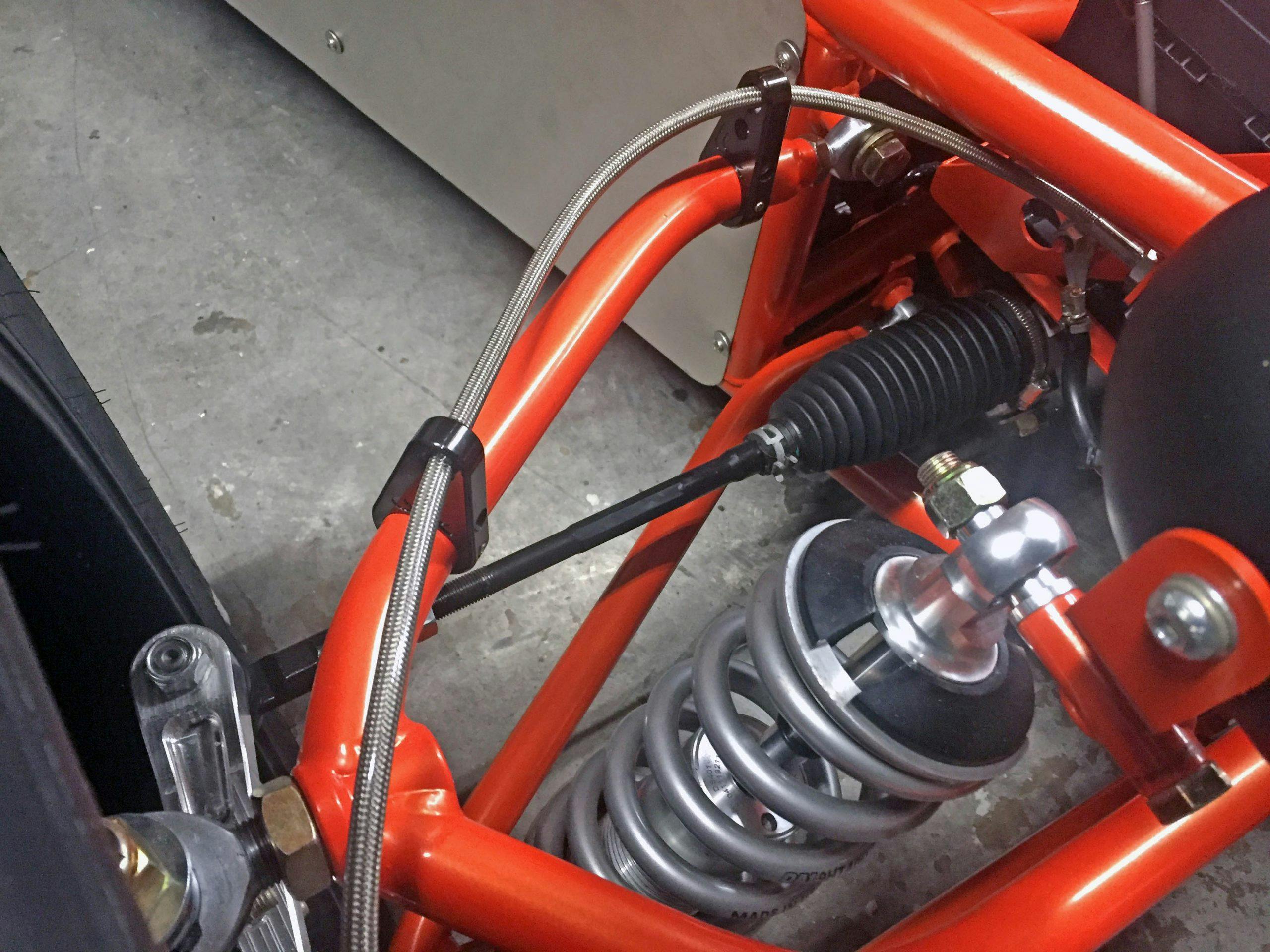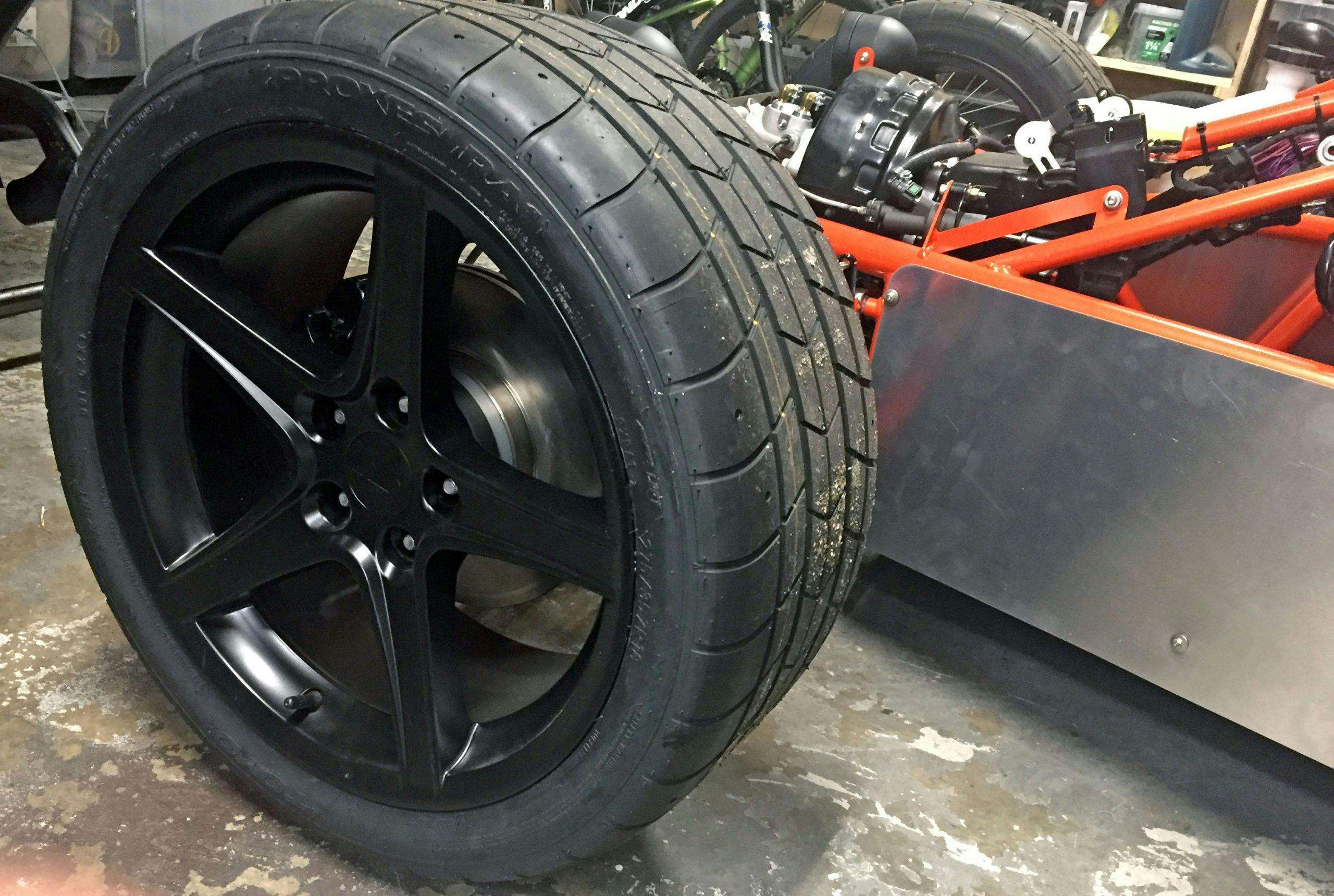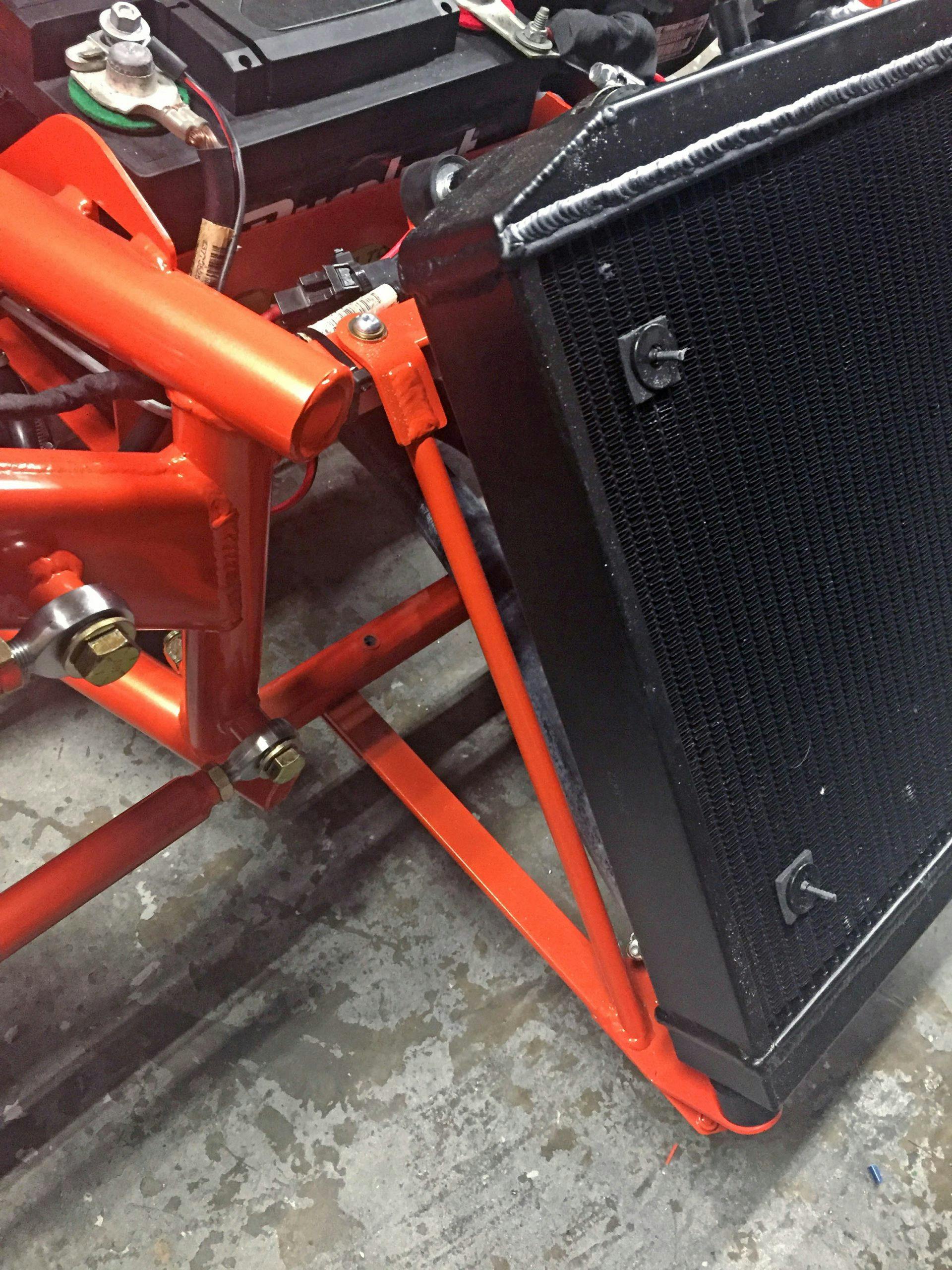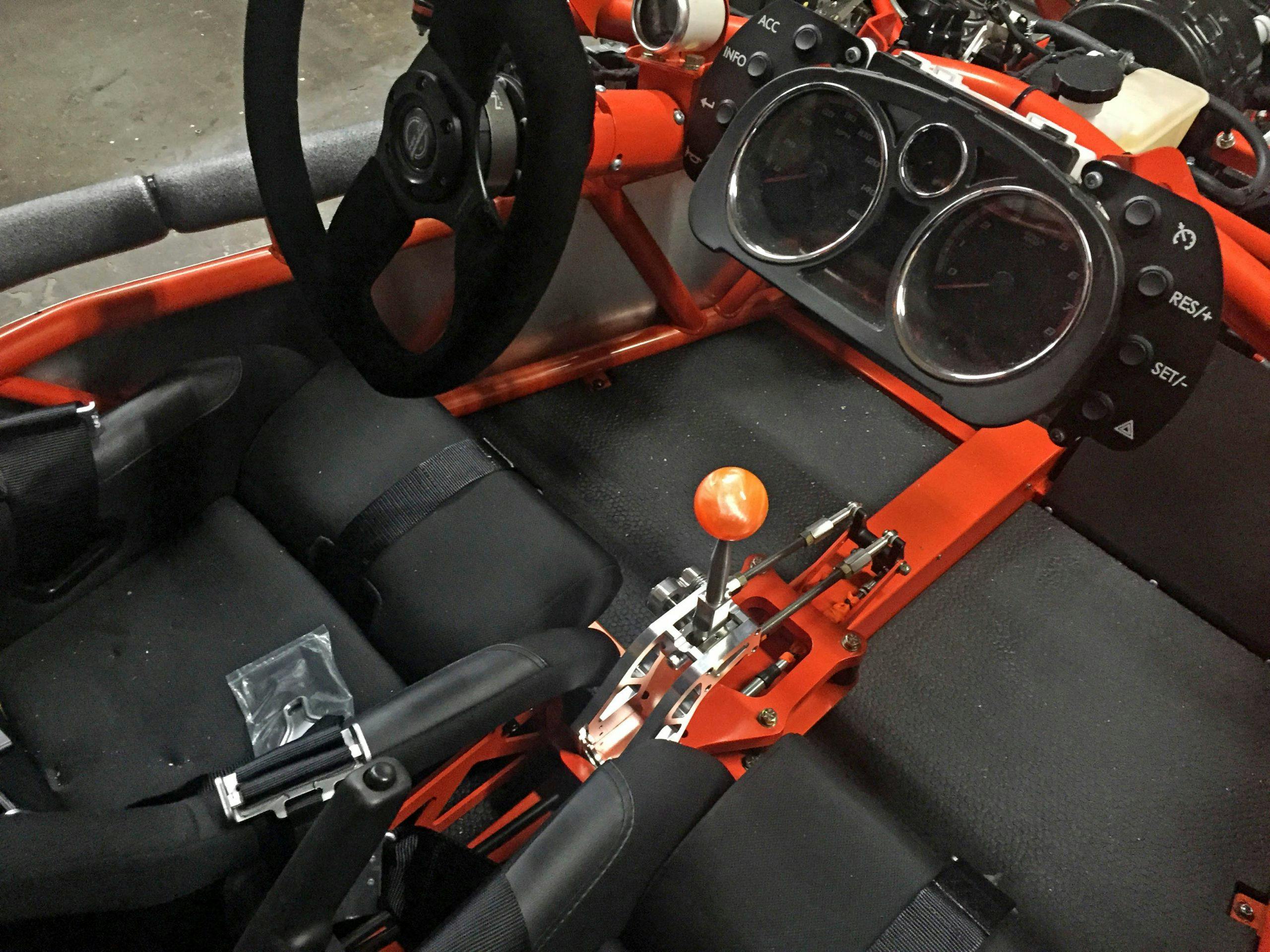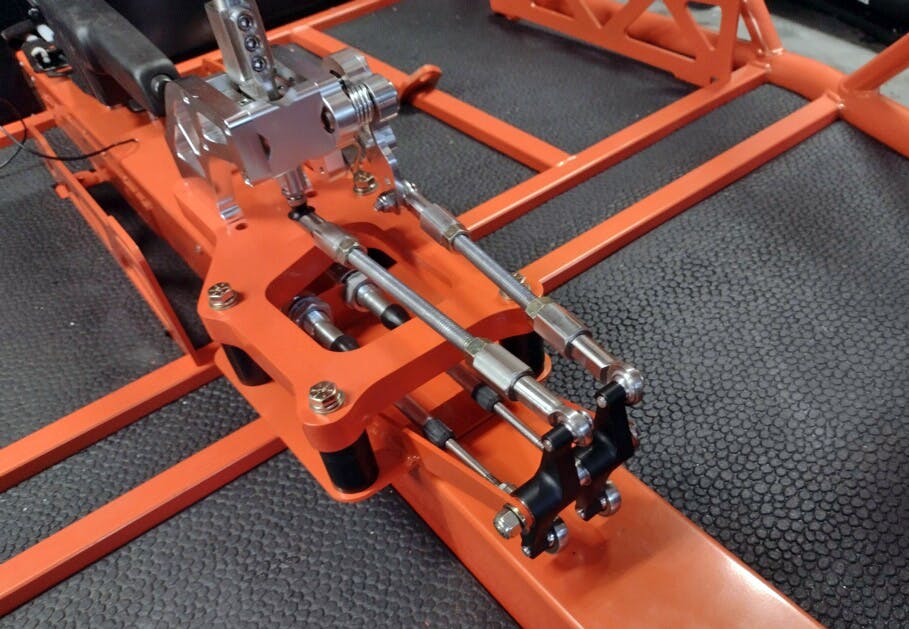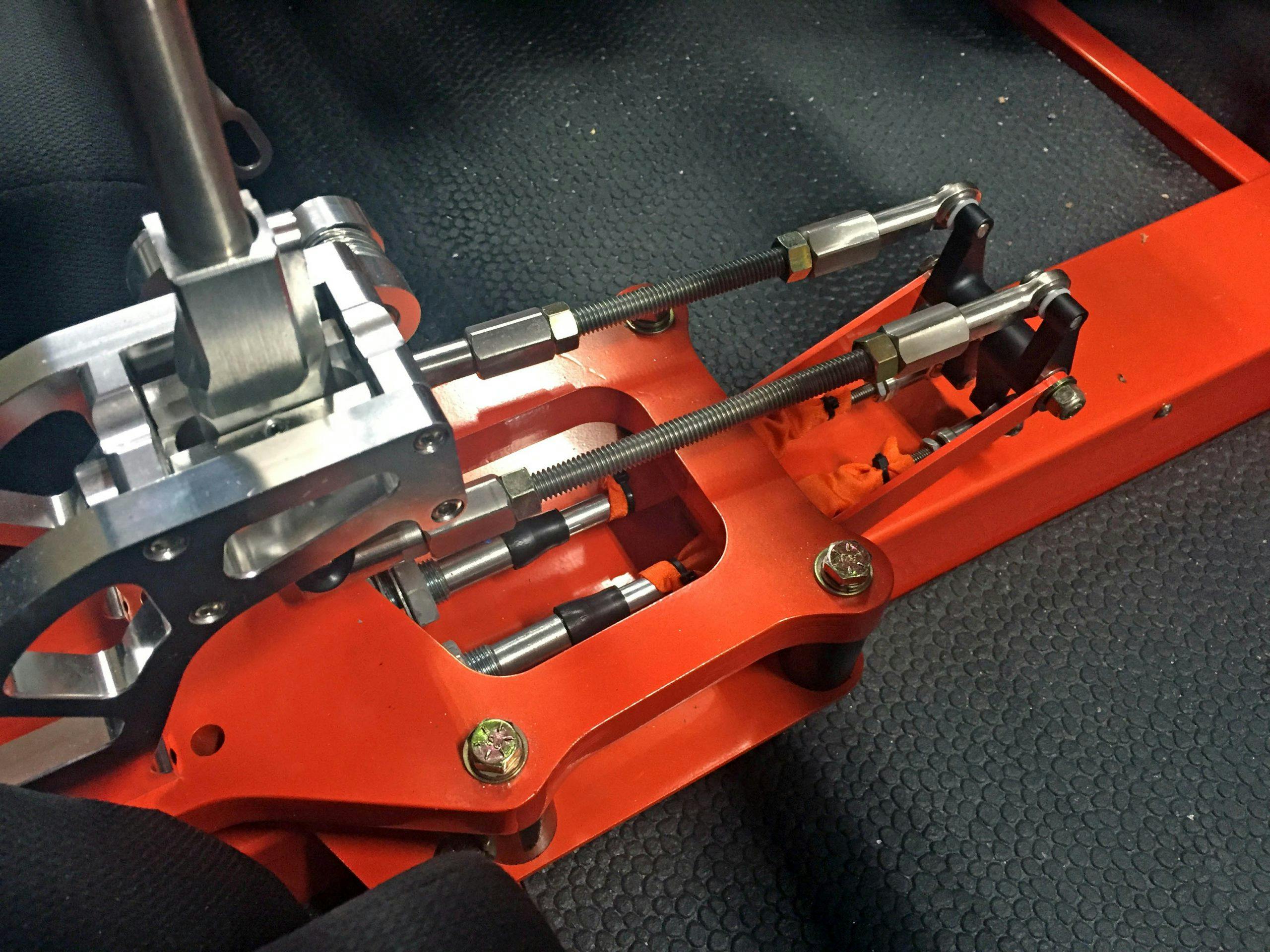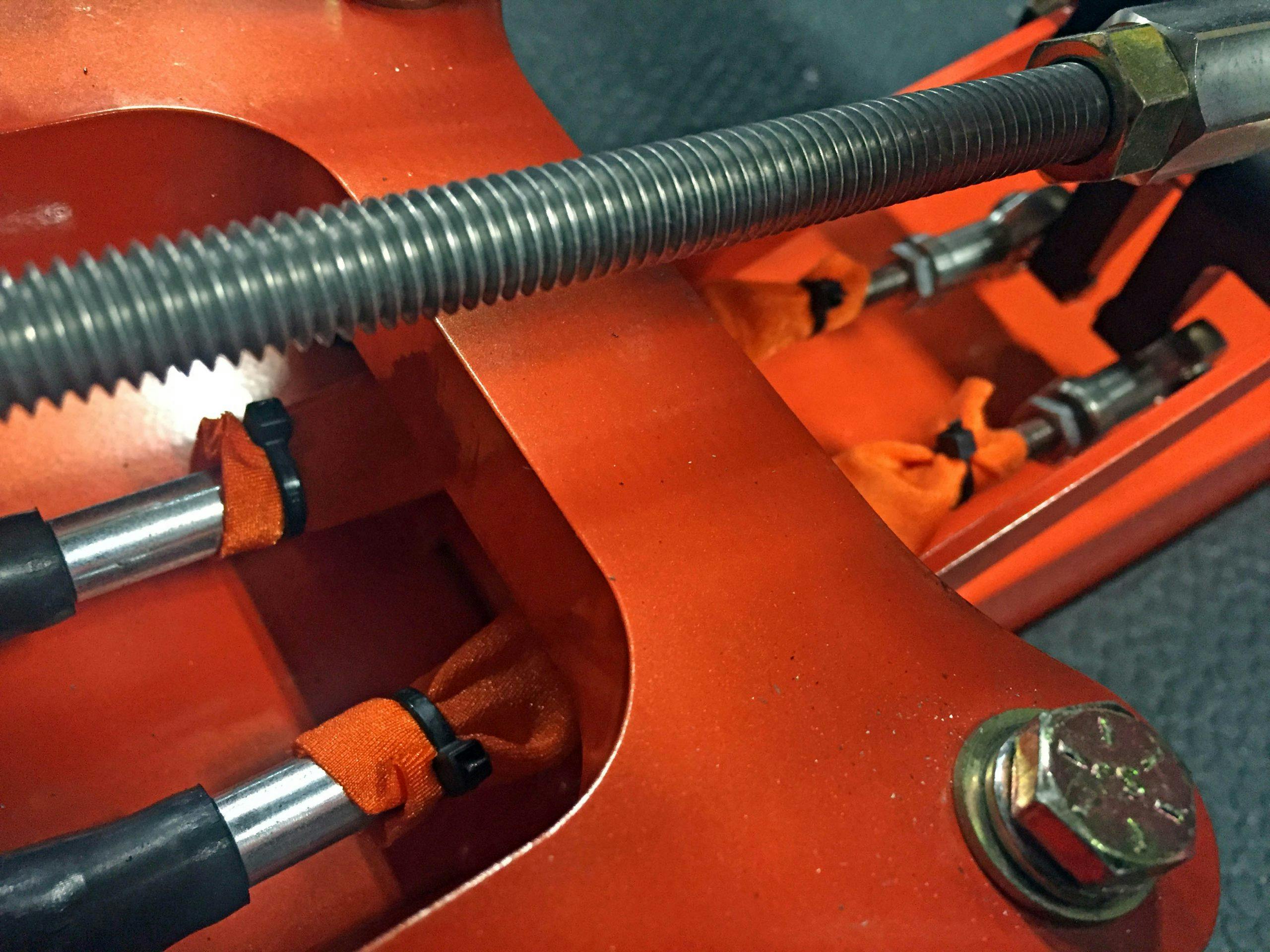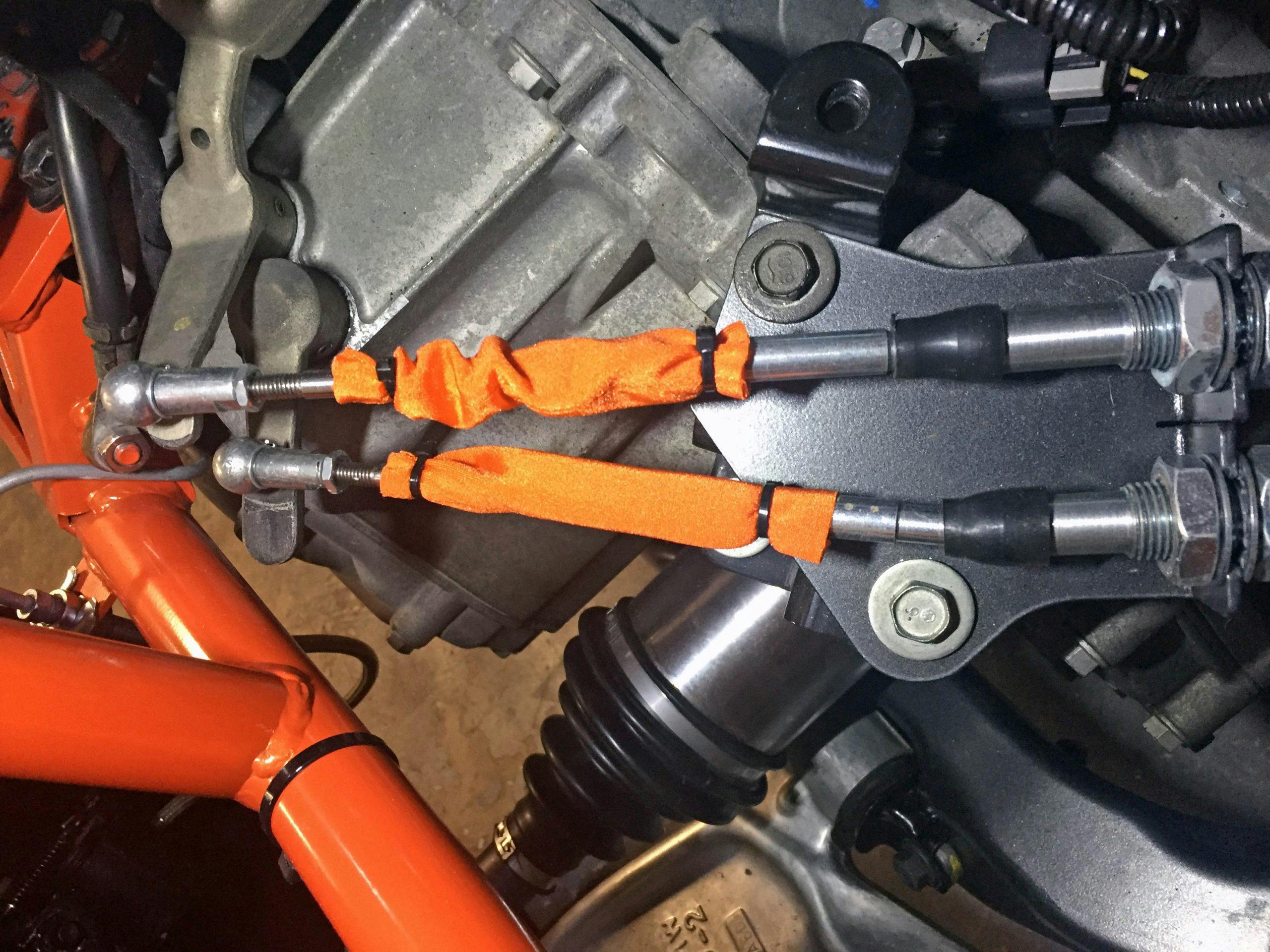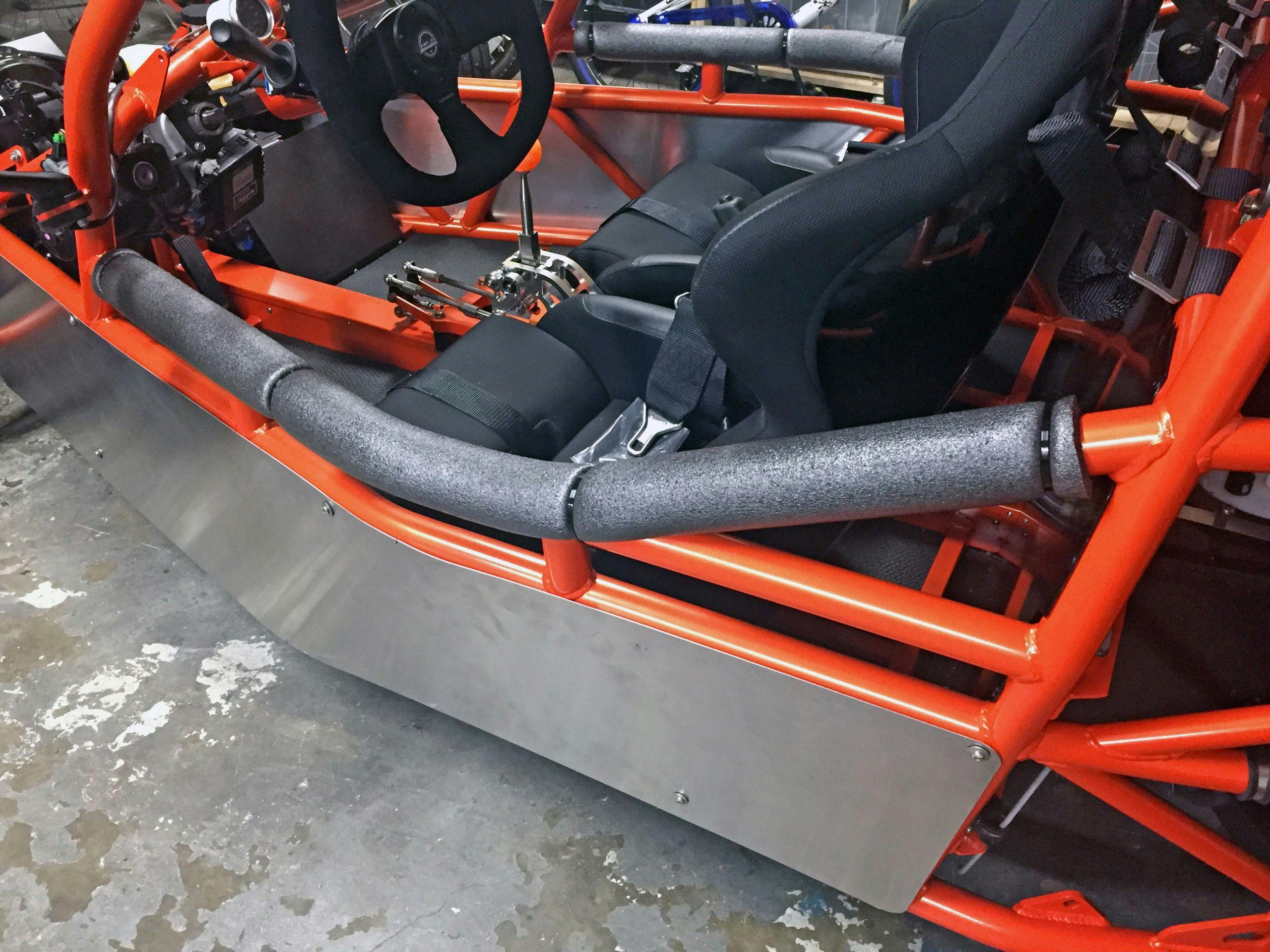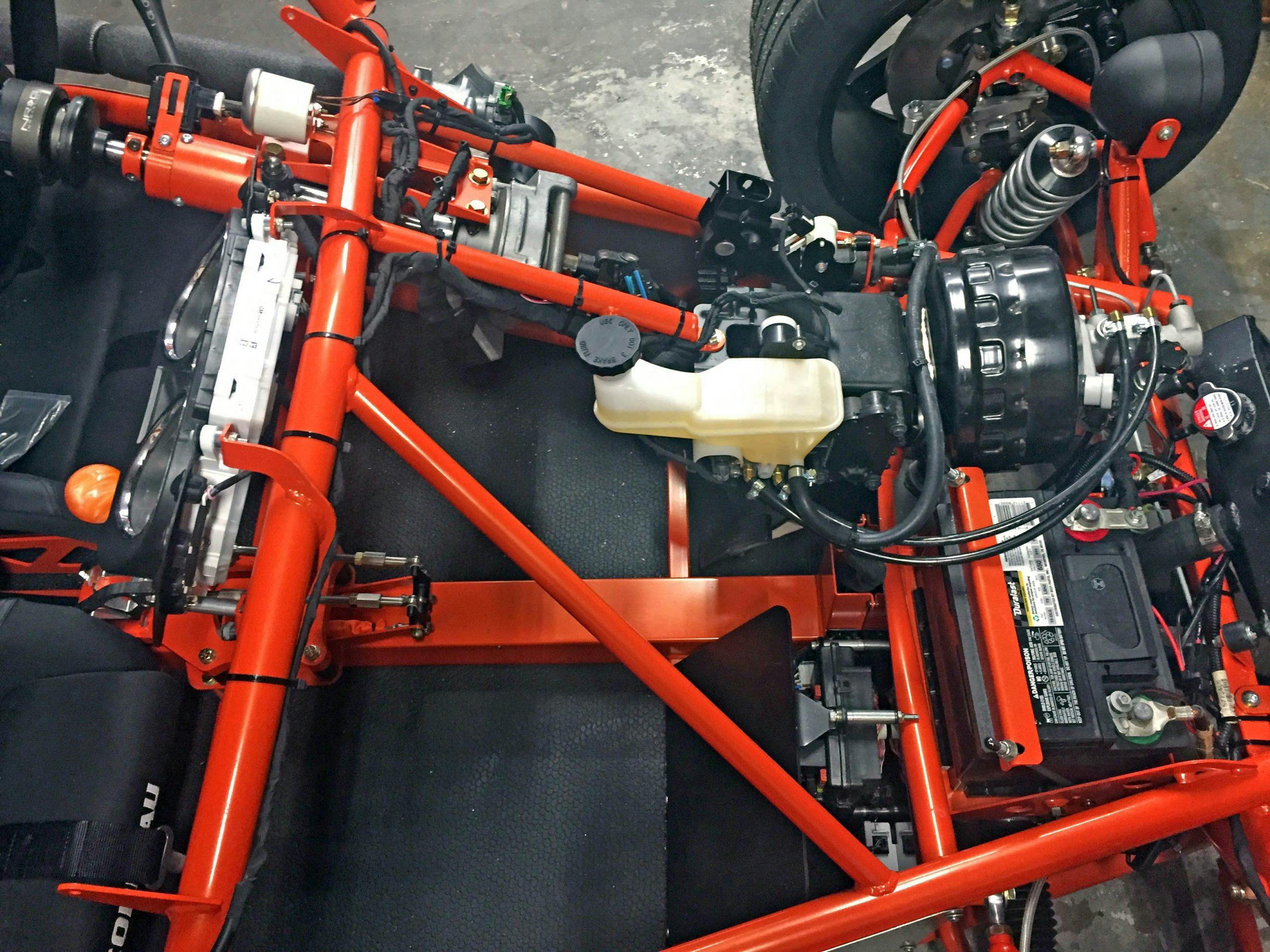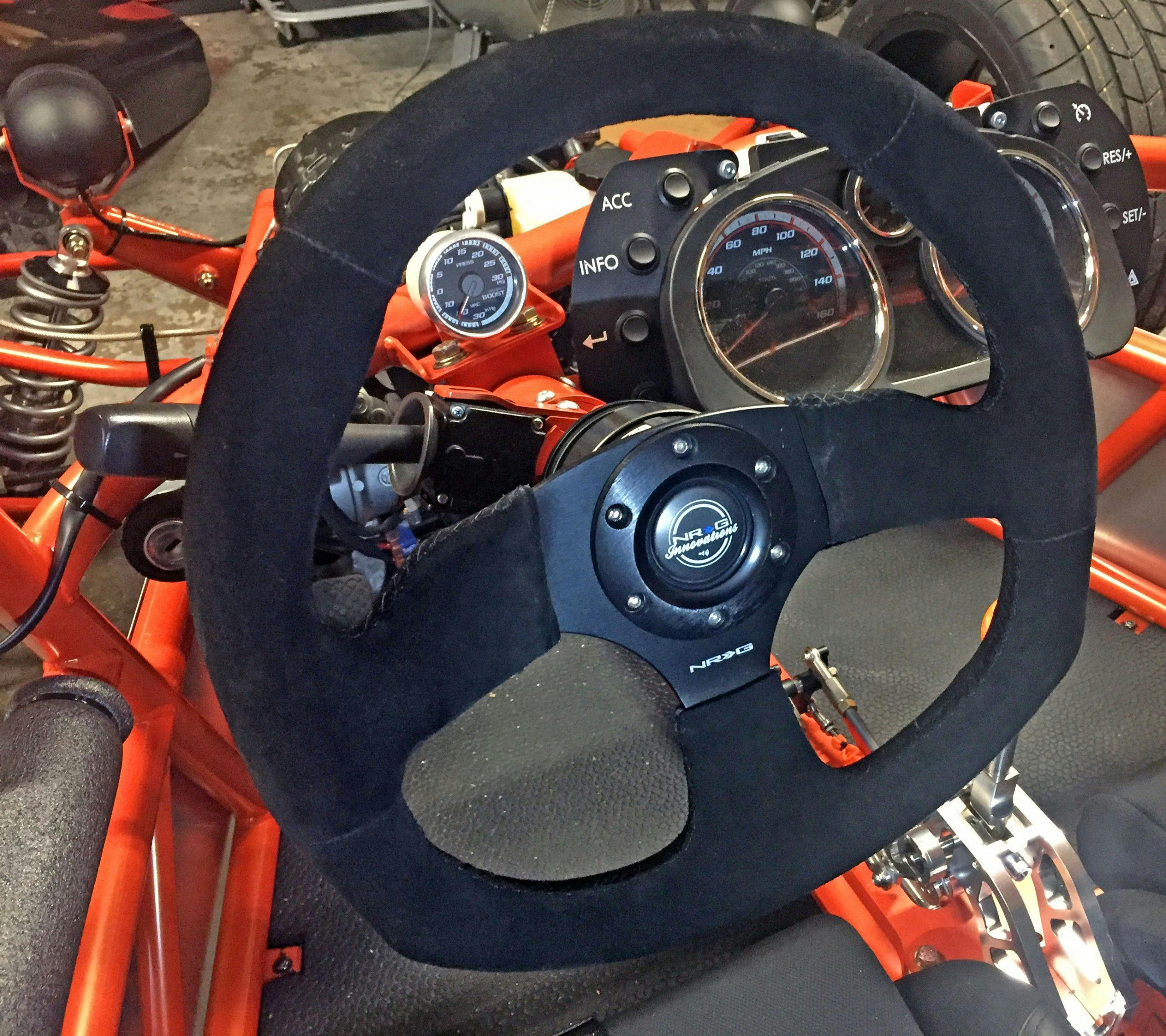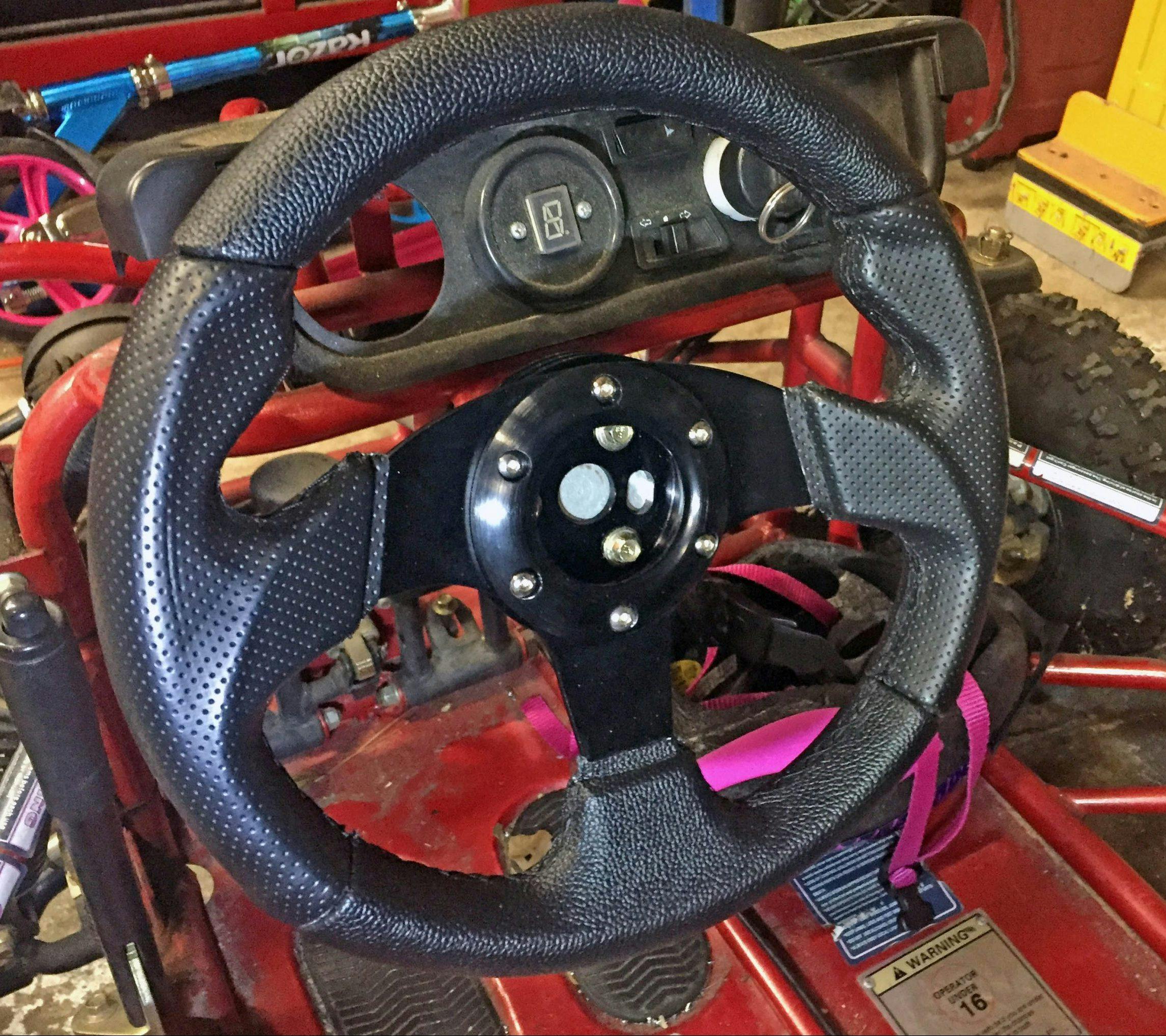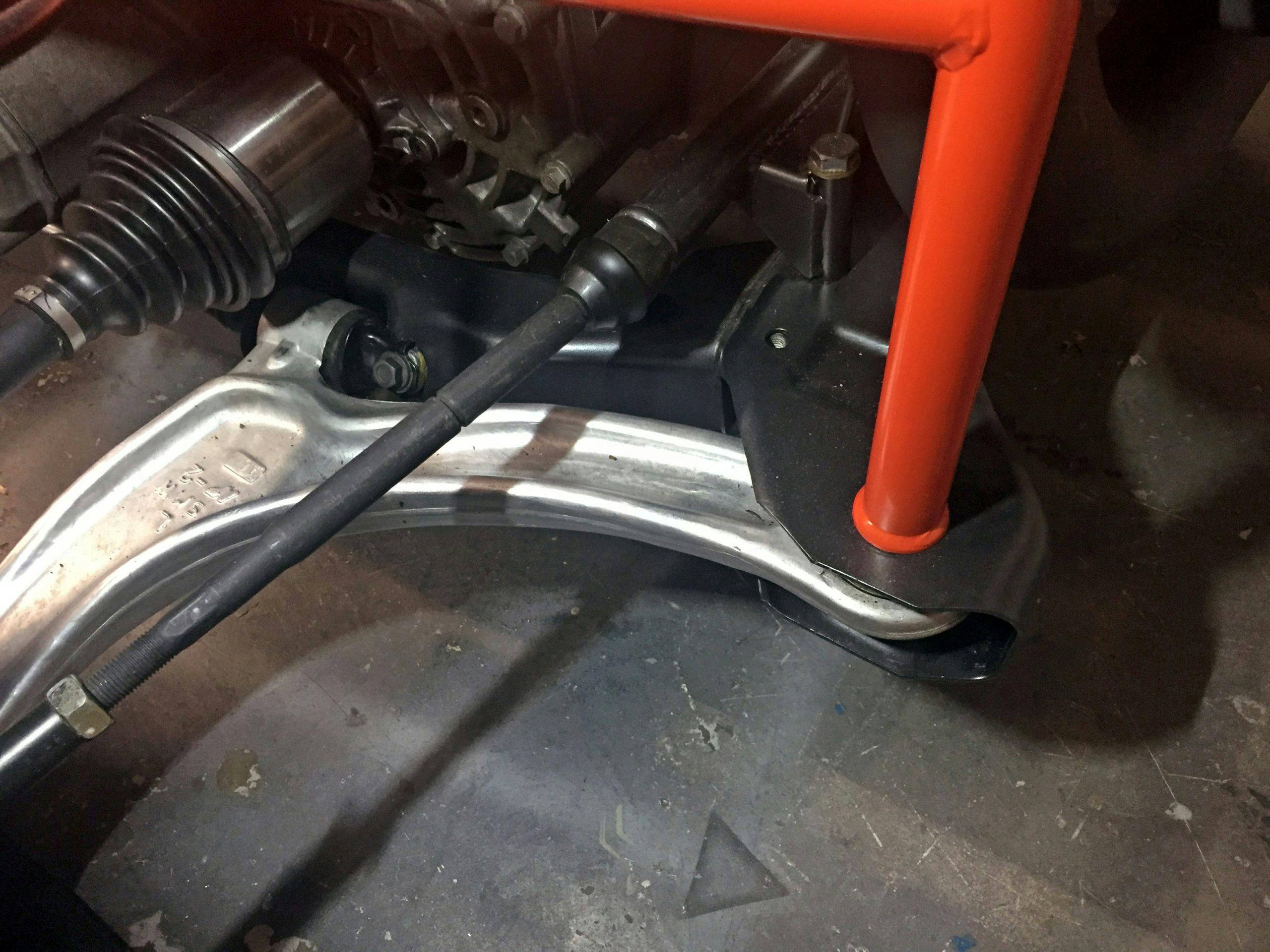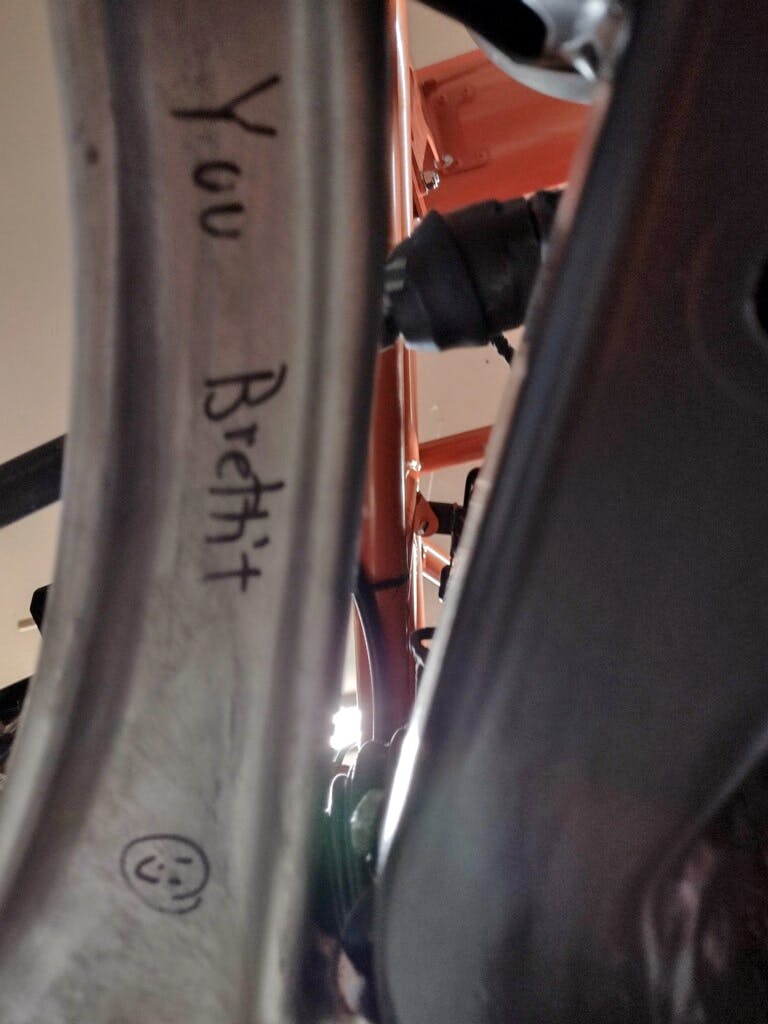Project Goblin’s builder never gives up, and version 2.0 proves it
In our last installment, we learned how Project Goblin was a Christmas Eve miracle. It was an experience that brought family, friends, and an automotive journalist just a bit closer together. But that was 2020, and Brett ensured the next Goblin had a far more impressive milestone just a year later: a successful test drive with a superior product. While it isn’t done, Goblin “Version 2.0” starts, stops, and steers. But perhaps we are getting ahead of ourselves.
Brett’s the coolest neighbor a car guy could ask for, especially since his job as a systems engineer parallels my past life as a technology project manager. We both know the trials and tribulations of birthing an IT implementation with numerous changes to satisfy a valuable customer, and the second Goblin felt like a lighthearted take on those efforts. Been there, done that, time to make this one a better implementation.
No doubt about it, Goblin v2.0 came together at a furious pace, as Brett spent most of 2021 collecting everything while DF Kit Car was cranking out his new frame. While I’m generally not a fan of brighter and bolder paint schemes, the bright orange powder-coated parts have a nice “pop” to them relative to all the darkened mechanical bits. (The first Goblin was black.) Which really isn’t the point, as Brett and I were in agreement that any kit car driven in a major metropolitan area needs to be as bright as possible to warn oncoming traffic distracted drivers piloting SUVs and lifted trucks of its presence on the road. But studious application of version control netted some other changes of significant consequence to the end user’s experience (as it were).
The brakes received a significant boost thanks to a Wilwood front/rear proportioning valve, and a nice cosmetic upgrade with billet aluminum brake line looms that bolted to the Goblin’s control arms. The latter is normally an upgrade for ATV owners looking for a bit more style, but the former ensures the rear brakes do their fair share of the work. Goblins are notorious for having front/rear proportioning more in line with their Chevrolet Cobalt donor cars, which isn’t a great ratio for a rear-engine, tube-frame car that weighs essentially nothing. Also keep in mind that a Goblin deletes the Cobalt’s ABS brake proportioning as part of the conversion, so an aftermarket prop valve isn’t a bad idea for a high-performance vehicle.
While the front brakes still do the majority of the stopping, careful tuning on the street and track will sort the proportioning completely. And track work will definitely be in order, considering Goblin v2.0 wears wider tires (275 mm vs. 245 mm) with a stickier tread compound to make full use of the braking system’s new swagger.
One of the things Brett insisted on with Goblin v2.0 was rerouting the coolant hoses from the outer frame tubes (a monumentally painful task) to the chassis’ center spine (pretty easy). A good idea, but the hoses’ new location required that he relocate the intercooler to the driver’s side engine compartment. A set of those rubber-inlayed hose clamps completed the relocation nicely, but since the Goblin’s chassis’ tubes aren’t the same height as they run past the engine compartment, Brett used aluminum spacers for a clean install. The shorter run of intercooler plumbing might speed up the production of turbo boost by a few milliseconds, and he can add a NACA duct to the (forthcoming) body work if air flow becomes an issue. A big win in my book.
Goblin v2.0’s most obvious performance enhancement comes from an aftermarket shifter that looks absolutely wicked in the barebones cockpit. And it’s a textbook case of how automobile enthusiasts thrive in the modern age: a fellow Houston-area Goblin owner modified an aftermarket, unbranded shifter intended for the Honda K-series platform with a custom billet aluminum base for the Goblin’s chassis, upgraded shift-cable pivot arms and protective (orange) cloth sleeves for the rubber boots from DF Kit Car, a marbleized orange shift knob (aftermarket, universal), and more locally-sourced orange powder coating. Kudos to the Goblin community for making this impressive feat of engineering come to fruition.
The passenger compartment is also a big improvement, with an extra “door bar” that dips down low to provide a bit more safety in a side impact without hurting ingress/egress from the cabin. Two more tubes were added to the frame just ahead of the dashboard, one diagonal (see foreground of second photo) and another one parallel to and behind the steering column. DF Kit Car sells the Goblin in few different body configurations, but this hybrid model suits Brett’s needs best.
A new steering wheel was definitely in order, as the tiller from the first Goblin was too small … and shall we say a bit too much like the ones found in a video arcade machine? No matter, Brett got a deal on flat-bottom, suede-wrapped affair from a fellow Goblin owner (left), and the original one looks nice and tidy on his son’s kart (right).
But the biggest improvement might be to the rear lower control arms mentioned in the last update. Getting the aforementioned, bespoke ball joint for the Turbocharged Cobalt SS was one thing, but adding spherical bushings in those control arms is another. Installing these fancy bushings (with their uncanny ability to manage loads at funny angles) isn’t a terribly easy job, so Brett got a fellow Goblin owner with access to better equipment than what’s in his garage to do the job for him.
The love note written in Sharpie only adds to the allure of Goblin v2.0, and Brett gets a good chuckle out of it to boot—even if he never flipped the first Goblin. No matter, what’s the end result of all this version control?
Project Goblin v2.0 came to life in Brett’s garage, then quickly reached the ground, running and driving before Saint Nick arrived in 2021 with presents for one and all. And now the new Goblin does everything the old one did, just slightly better. Only the trained eye catches the differences, but still, this video doesn’t quite do the DF Goblin justice. That turbocharged Cobalt SS powertrain is simply sinister in a vehicle this focused.
A new clutch safety switch was needed for reliable starting, but as the video shows, this inaugural trip spanned just a few yards away from home, ensuring the suspension and brakes were assembled correctly. After getting an alignment, the next run can happen with a reasonable amount of confidence. And it’ll happen soon, as Goblin v2.0 is close to completion, nearing its street-legal status in the Lone Star State.
Stay with us for the ride—the next update will not disappoint!

